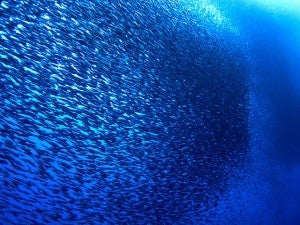
photo credit: wanderlasss via photopin cc
To paraphrase F. Scott Fitzgerald, the test of a first rate intelligence is the ability to entertain two opposed ideas at the same time and still function.
Two views on the importance of catch data for estimating the abundance of fish populations are portrayed as opposing ideas in recent articles, but both of the “antagonists” display first rate intelligence by coming to the same conclusion: catch data send an important signal about the status of a fish population, but other kinds of information must be applied to avoid being confounded by all the other things that affect catch and come to a reasonably accurate estimate of fish abundance.
This argument over methodology may seem arcane, but the stakes are high: estimates of the status of global fisheries based on catch data, which are available for most fisheries, suggest they are in pretty poor shape, because catches have declined sharply in many of them. But when one looks at stocks that have been assessed by scientists who take into account fishery-independent measures of abundance, the situation looks far less dire, because decreases in catch can result not only from decreased abundance, but also from changes in markets, environmental conditions, regulations, and even in what fish are called – Hilborn and Branch point out that in the 50’s, all sharks were put into only 7 categories, but now there are 36 groups for which catch data are collected, so that reduced catch in some of the earlier categories may merely be the result of re-classification.
So catch data provide a satellite-eye view of the whole world that is out of focus, while stock assessments provide really sharp images of your town. Which is the more accurate depiction of reality? Neither, of course. These two perspectives must be intelligently synthesized to find reality.
One way to do this synthesis may be to consider the factors that can affect catch, and therefore its usefulness as a proxy for fish abundance, one at a time, so that we can systematically extract more information from catch data. It seems as though the effects of changes in fish names could be easily addressed by reconstructing the original categories – for example, lumping the 36 current categories into the original 7 to see if catch actually did decline. The effects of regulations only apply to fisheries that are regulated, obviously – and these happen to be the fisheries most likely to be assessed scientifically. The major gap in our understanding of fish stock status is in unregulated fisheries, where changes in regulations are probably not affecting catch very much. The effects of markets on catch could be analyzed at least in a sample of fisheries covering a range of fishery archetypes – for example, industrial commodity fisheries, small scale fisheries with aggregated catch for export, small scale fisheries that sell to domestic or regional markets, etc. – by looking for correlations between ex-vessel prices paid to fishermen and catch. Same thing for the effects of fishing costs.
Instead of expending energy arguing about the merits or de-merits of using catch data to estimate fish stock status, maybe both camps should engage in a collaborative research project aimed at quantifying the effects of the many factors that affect catch so that catch data – the only data that are available for the majority of the world’s fisheries at the moment – can provide a more accurate picture of global fisheries status.









